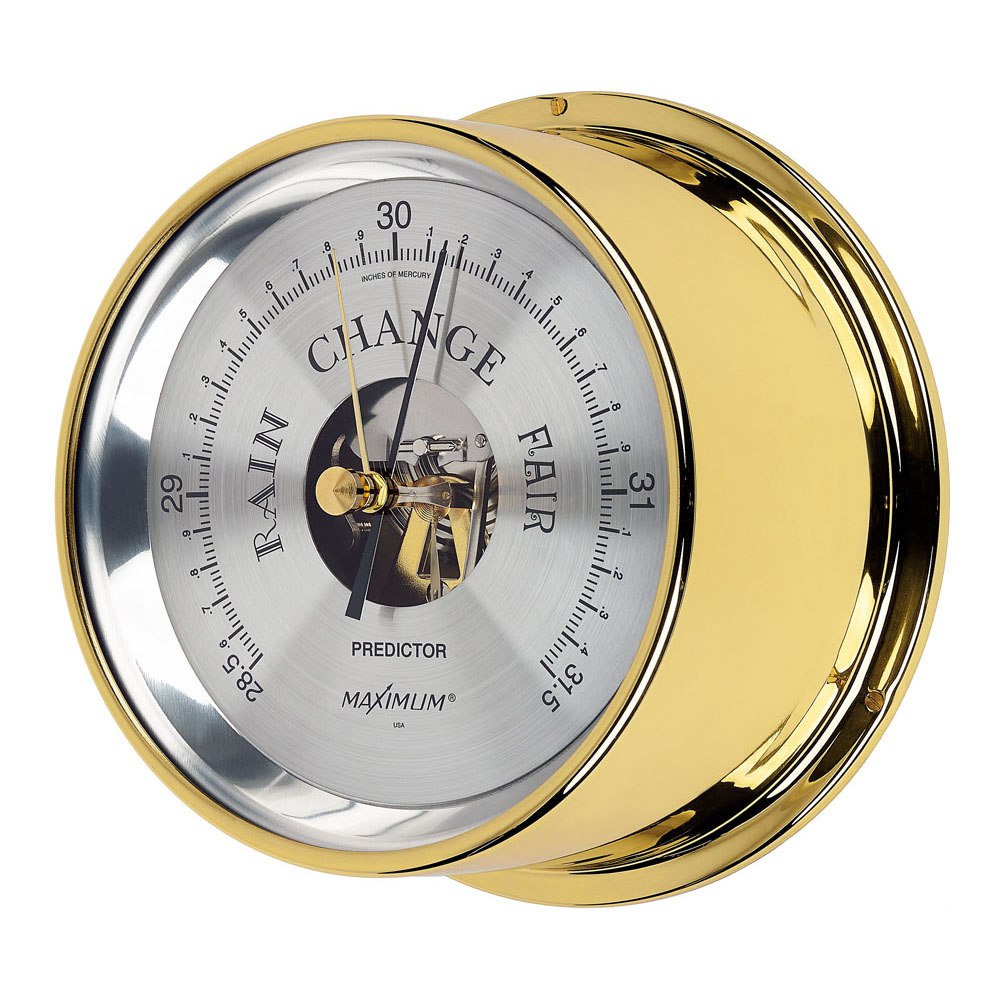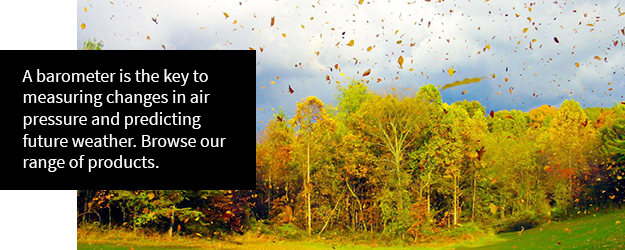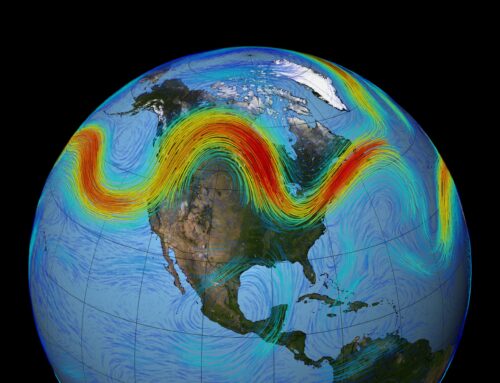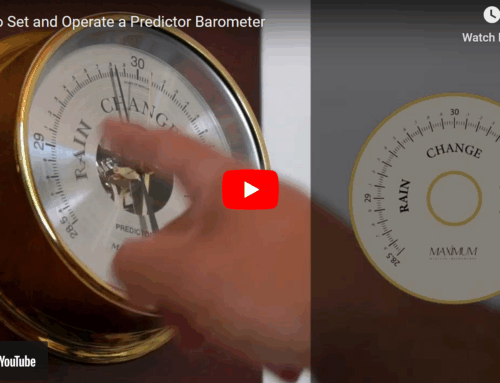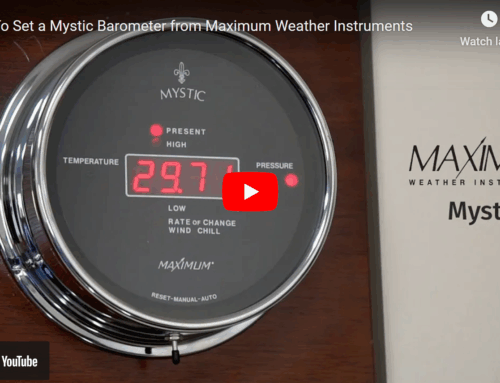Barometers are weather instruments that measure changes in atmospheric pressure. While there are a few different types of barometers, Maximum specializes in aneroid barometers including the Proteus and Predictor models. Aneroid barometers are a safer way to measure atmospheric pressure than mercury-based instruments and require no external power source, unlike digital barometers..
What is an Aneroid Barometer?
An aneroid barometer is a type of instrument used to measure atmospheric pressure. The name “aneroid” comes from the Greek words “a-” meaning ‘without’ and “nēros” meaning ‘liquid’. This name came about because all previous barometers used either mercury or water to measure changes in pressure. The invention of the aneroid barometer in 1844 by French scientist Lucien Vidi was a significant advancement from the traditional mercury barometer, as it is smaller, more portable, and more durable.
How to Read an Aneroid Barometer
Reading a barometer correctly involves noting both the current pressure and whether it is rising or falling.
-
Steady or rising high pressure usually indicates clear, stable weather.
-
Falling pressure suggests an approaching low-pressure system, often associated with increasing cloud cover, wind, or precipitation.
-
A rapid pressure drop can signal an approaching storm or frontal system.
-
When pressure is steady within the normal range, significant weather changes are unlikely.
Understanding these trends helps predict short-term weather changes more effectively than the exact pressure number alone
Aneroid, Mercury, and Digital Barometers: How Do Different Barometers Work?
All barometers are tools used to measure atmospheric pressure, and they come in three major types. While aneroid and mercury barometers have been used for centuries and operate without external power, digital barometers represent modern advancements in pressure measurement. Each type functions differently, with unique advantages depending on the application. If you’ve ever wondered, “how does a barometer work?”, the answer depends on the type of barometer being used—whether mechanical or digital.
- Mercury Barometer: Mercury barometers use a vertical glass tube which contains the mercury, and changes in the pressure cause the mercury to rise and fall within the tube, which is marked to indicate the corresponding atmospheric pressure.
- Digital Barometer: Digital barometers use electronic sensors to detect atmospheric pressure and display the readings digitally. These sensors provide real-time, highly precise pressure measurements and are often found in weather stations, smartphones, GPS devices, and aviation systems.
- Aneroid Barometer: Unlike mercury and digital barometers, aneroid barometers do not use liquid or electronic components to measure pressure. Instead, they rely on a flexible, sealed metal chamber that expands and contracts with changes in atmospheric pressure. The mechanics behind this process will be explored in more detail later in the post.
What Causes Air Pressure to Change?
The key factor behind air pressure changes is temperature. Warm air is lighter because its molecules move faster and are spread out. Cooler air is denser because its molecules move slower and are closer together.
So, when it’s warm, there’s lower air pressure because the air is lighter. When it’s cool, there’s higher air pressure because the air is denser.
How Do Aneroid Barometers Work Without Liquid?
Aneroid barometers use a small metal box, known as an aneroid cell, which is designed to expand and contract with changes in atmospheric pressure. The aneroid cell consists of a thin, flexible metal capsule that is usually made of brass or an alloy of beryllium and copper. The cell has most of the air pumped out of it so that when the atmospheric pressure changes around it, the pressure inside the cell will also change, causing the capsule to expand or contract. To measure the expansion and contraction of the cell a mechanical linkage, including a spring, converts the movements of the capsule into the motion of a pointer on a dial, indicating the changes in atmospheric pressure.
The design of aneroid barometers is highly precise and requires meticulous calibration when manufactured to ensure accuracy. By adjusting the tension in the spring that connects the aneroid cell to the mechanical linkage, the barometer can be calibrated to provide highly accurate pressure readings for many years, as long as they are stored in a suitable environment. Because they are self-powered with nothing but mechanical parts, they can be serviced, will never experience any sort of power failure, and can be moved around throughout their lifespan from room to room or house to house.
Aneroid Barometer vs. Mercury Barometer
Aneroid and mercury barometers have a lot in common in that they are both used to measure atmospheric pressure, they’re both centuries-old technology, and neither require external power. However, there are several key differences between the two. Mercury barometers use a vertical glass tube which contains the mercury, and changes in the pressure cause the mercury to rise and fall within the tube, which is marked to indicate the corresponding atmospheric pressure.
Safety & Stability
One of the biggest benefits of aneroid barometers is that they do not contain hazardous materials like mercury, which is highly toxic and poses a severe environmental risk if a mercury barometer leaks or its glass tube breaks. An aneroid barometer uses nothing but metal and mechanical components, so there is no potential danger or risk associated with them. This is also why very few mercury barometers are still manufactured in the world, and most available are antiques.
Portability & Durability
Aneroid barometers are compact, lightweight, and rugged, making them easy to transport and suitable for use in homes, boats, or the field. Their all-mechanical design also makes them less prone to breakage than glass mercury barometers. Mercury barometers, in contrast, are heavy, fragile, and sensitive to movement.
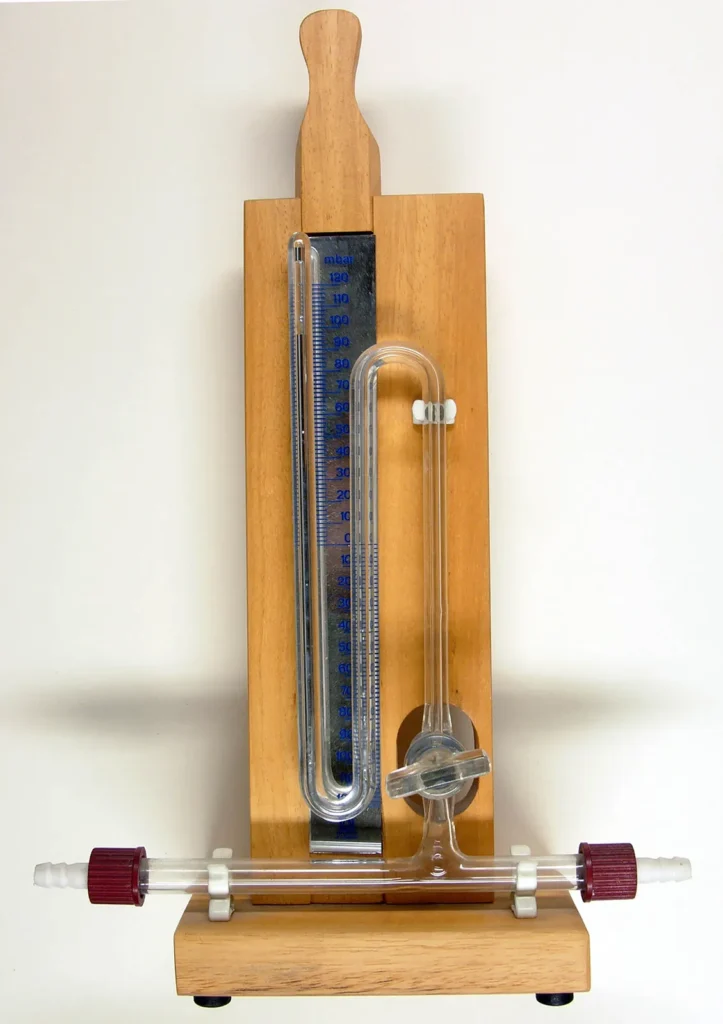 Conclusion
Conclusion
Aneroid barometers are a versatile and reliable way to measure atmospheric pressure. The design, which eliminates the need for liquid, makes them durable, portable and easily serviced or calibrated. With their ability to provide accurate and real-time pressure readings, aneroid barometers continue to play a crucial role in understanding and predicting changes in the atmosphere and are used by meteorologists worldwide. To learn more about atmospheric pressure and how barometers work, explore all of our articles and videos on the subject here, or feel free to contact us with any questions.

